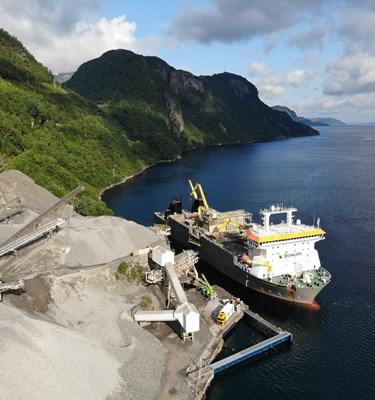Boskalis has extensive experience in seabed preparation aimed at protecting the seabed and the assets placed in or on it. This includes the installation of materials such as rock and sand to protect subsea pipelines, umbilicals and cables, as well as the placement of loose rock material near structures in order to prevent local seabed deepening. Our added value also lies in our wide range of construction and installation vessels that execute the work in an efficient and expedient manner.
Seabed rock installation
In recent decades we have executed numerous projects that involved preparing the offshore seabed prior to the installation of artificial objects such as pipelines, umbilicals and cables. After installation we are often involved in placing small rock gradings on top of or adjacent to the structure in order to ensure the stability of the location. We were also involved in the scour protection of gravity based structures and protection of wind turbine foundations, substations and power cables against seabed erosion, anchors and fishing nets.
Our specialized vessels are equipped with a flexible fallpipe system that can reach depths of up to 1,500 meters. These relatively large vessels can hold a volume of up to 24,000 tons.
Gravity-based structures (GBSs)
Seabed preparation also consist of leveling the seafloor by removing soft top layers, thus creating a flat and table area for the foundation of an artificial structure. Oftentimes we place a thin layer of rock material on the seabed to even out any irregularities. We are specialized in projects that involve a wide range of marine-related activities, such as:
- soil improvement by leveling the seafloor and/or replacing the original seabed material
- transport of GBSs to the project site
- installation of GBSs
- ballasting GBSs with fluids or solids
- scour protection installation to prevent erosion of the original seabed near the GBS structure
We offer three different methods to install the solid ballast in the structure:
- pumping the ballast as high-density non-settling slurry
- pumping the material as relatively low-density slurry
- conveying material using dry equipment
The preferred ballasting method depends on the GBS compartment layout, availability of the ballast material and project-specific requirements. During the design phase our engineers can assist in the selection of the type of ballast, potential platform modifications and the most effective installation method.
Let’s Talk
Contact Information
For seabed intervention related queries get in touch with our Commercial Director.




